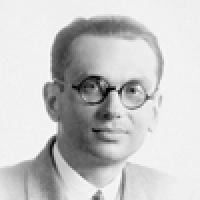
Kurt Gödel: A postard from Vienna
One of our favourite authors, Wim Hordijk, recently sent us a digital postcard from the beautiful city of Vienna, where he had traced the steps of the eminent mathematician Kurt Gödel. Here is what he discovered.
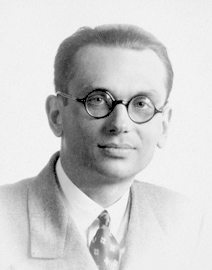
Kurt Gödel.
Kurt Gödel was one of the greatest mathematicians of the 20th century. He made many important contributions to mathematical logic and philosophy, but is best known for his incompleteness theorems. Loosely speaking, the theorem states that the dream of phrasing all of mathematics in terms of a formal system, based on a set of axioms and the rules of logic, is bound to fail: there will always be statements that are true but whose truth cannot be proved within the axiomatic system itself. This abruptly ended a longstanding quest by some mathematicians to construct a set of axioms sufficient for all of mathematics (you can find out more in this Plus article).
Gödel was born in 1906 in Brünn, then part of the Austro-Hungarian empire (now Brno, Czech Republic). At the age of 18 he moved to Vienna, where he studied and worked from 1924 until 1940, and also took part in the famous Vienna Circle. He completed his PhD dissertation at the age of 23, and became a lecturer at the University of Vienna a few years later. In January of 1940, after the start of World War II, Gödel and his wife left Europe for good to start working at the Institute for Advanced Study in Princeton, USA, where he became close friends with Albert Einstein. He died in Princeton from self-imposed starvation in 1978.
The Kurt Gödel Research Center for Mathematical Logic (KGRC) of the University of Vienna was named after and in honor of Gödel, who proved his completeness and incompleteness theorems in Vienna in the years 1929-1931. For a long time the KGRC was housed in a beautiful building called the Josephinum on the Währingerstrasse, close to the main university building, and just a few doors down from one of the buildings where Gödel lived for a while.
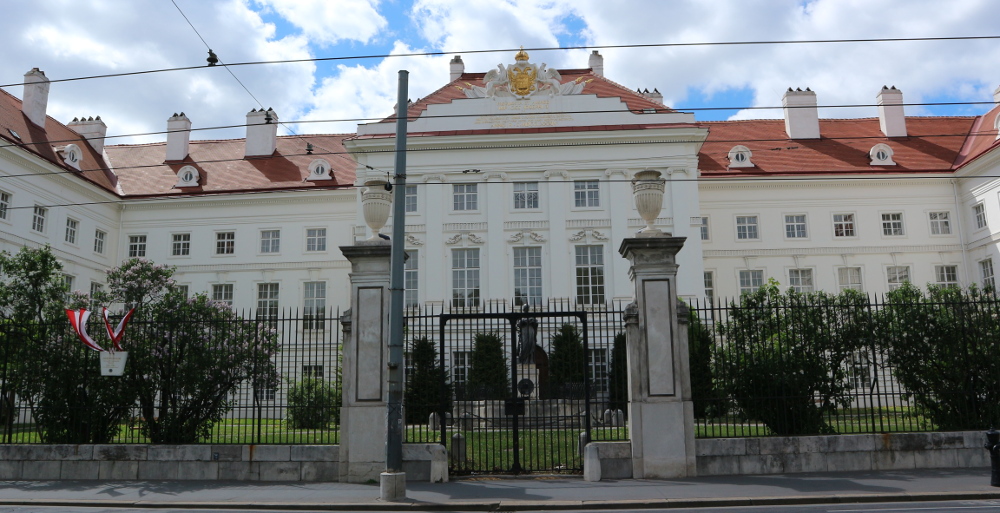
The Josephinum on the Währingerstrasse in Vienna, where the KGRC was located. Image: Wim Hordijk.
In fact, Gödel lived in quite a few places in Vienna. During the roughly 15 years that he studied and worked there, he took up residence in seven different places throughout the city. On the KGRC website you can find a list of addresses where he lived (and when), together with a map indicating these locations. Moreover, each building where Gödel lived has a commemorative plaque next to its entrance.
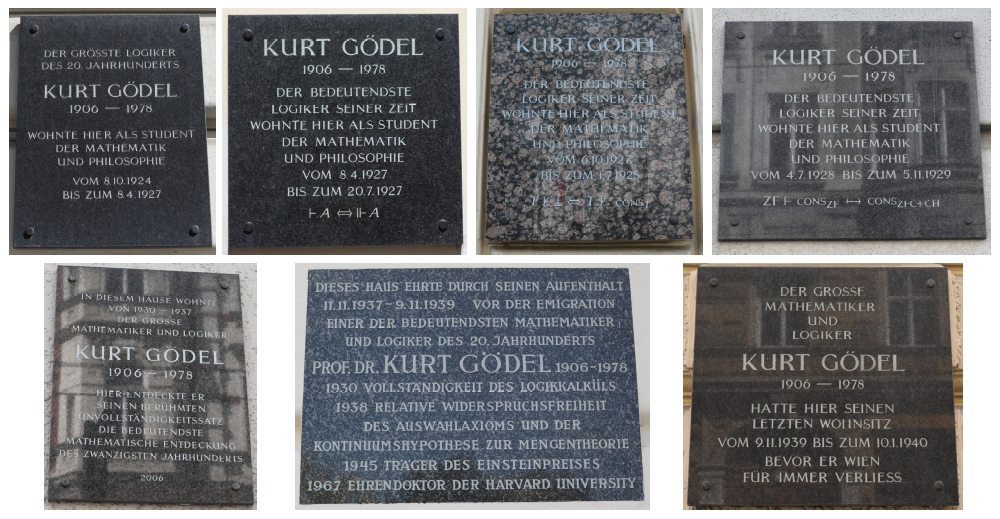
The seven plaques at the buildings in Vienna where Gödel lived. Top row, left to right: Florianigasse, Frankgasse, Währingerstrasse, Lange Gasse. Bottom row, left to right: Josefstädterstrasse, Himmelstrasse, Hegelgasse. Images: Wim Hordijk.
With Vienna's excellent public transportation, it is actually possible to visit all of these places in one day, making Gödel's story come to life. But if you need more time, the building at Währingerstrasse 33 (just a few steps from the Josephinum) is now a hotel. So if you want to make it even more real, it is possible to spend a couple of nights in one of the places where Gödel once lived.
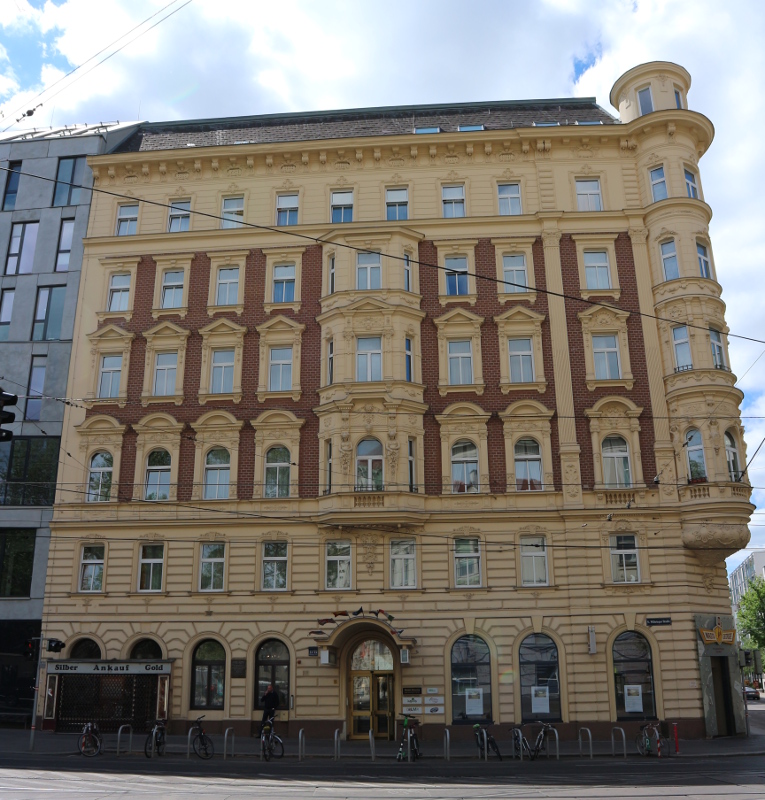
The building at Währingerstrasse 33, where Gödel lived as a student, is now a hotel. Image: Wim Hordijk.
The beautiful city of Vienna is already worth a visit in itself, but for mathematics aficionados the visible legacy of Kurt Gödel makes it even more worthwhile. The information presented here will hopefully serve as an inspiration for others to also experience some real maths history first-hand.
About the author
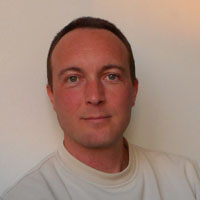
Wim Hordijk is an independent and interdisciplinary scientist and popular science writer. He has worked on many research and computing projects all over the world, mostly focusing on questions related to evolution and the origin of life. More information about his research can be found on his website.
Edi Vermaas
Another nice "travel guide" for Vienna: Karl Sigmund - Sie nannten sich Der Wiener Kreis: Exaktes Denken am Rand des Untergangs
duybao20
I first time read about Kurt Godel in From "Certainty to Uncertainty" when i was in high school. Since then, he was my idol and i put his name into my English name, too. But i don't have opportunity to come to this place cause it's so far from my town in Viet Nam. Your short article is interesting and lets me know more about Godel. In your point of view, things are so closed and real. Thanks.
- Eupyth Kurt -
Lei
When I visited Vienna I actually lived in the Atlanta Hotel - the building at Währingerstrasse 33. I saw the plate of Godel. Quite fortunate!